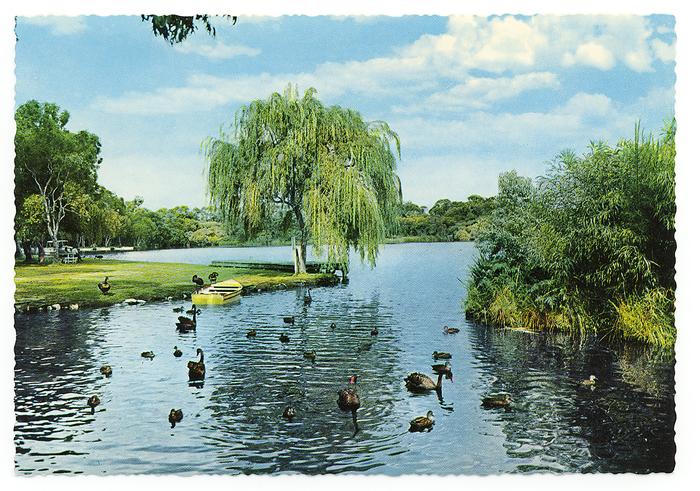The name Yanchep is believed to have derived from the native name Yanget a native flax which grew on the lake within the park. (Chambers) The area was first visited by Europeans in 1834, by John Butler recorded the lakes and an abundance of game while searching for stray cattle north of Perth. Four years later, Lieutenant George Grey explored the area. In the period 1899-1902, the first actual settler, Henry White, built a cottage near Lake Yanchep. In 1905, the Government vested reserve No 9868 in the Caves Board which included 5,640 acres of the district which incorporated the lake and flats approximately 8km long, for the Protection and Preservation of Caves and Flora and for a Health and Recreation Pleasure Resort.
During the 1930s philanthropist Sir Charles McNess made a grant of 11,600 pounds for the alleviation of distress due to the Depression and this act of benevolence, along with the good management of the State Gardens Board, saw the commencement of major developments in the Reserve. During the 1930s Yanchep National Park was established as a recreational resort on the shores of Lake McNess. The complex included Gloucester Lodge, Yanchep Inn, McNess Guest House, Ghost House Ruin and Chauffeur's Room, Army Bunkers and Administration Buildings.
In 1935 Lake Yanchep was renamed Loch McNess in honour of Sir Charles McNess's contribution to the Reserve's development. During World War two the RAAF established a radar station in the park and Gloucester Lodge and Yanchep Inn were occupied by the No 4 Convalescent Depot and the No 4 Medical Rehabilitation Unit. In 1976, the National Parks Authority of WA considered demolishing Gloucester Lodge. The Shire of Wanneroo then acquired the lease of the building and partially renovated it for use as a local museum which opened in 1979.
